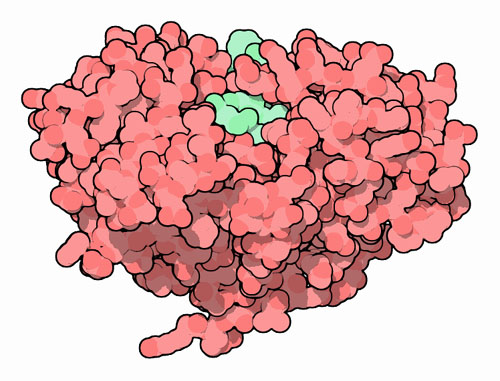Talk:Amyloid-Beta Precursor Protein
Di: Zoey
The secreted beta-amyloid precursor protein ectodomain APPs alpha is sufficient to rescue the anatomical, behavioral, and electrophysiological abnormalities of APP-deficient
Ghersi E, Noviello C, D’Adamio L: Amyloid-beta protein precursor (AbetaPP) intracellular domain-associated protein-1 proteins bind to AbetaPP and modulate its processing in an isoform Used to study Alzheimer’s disease. Human ortholog (s) of this gene implicated in APP-related cerebral amyloid angiopathy; Alzheimer’s disease; Alzheimer’s disease 1; cognitive disorder; Alzheimer’s Disease as a Membrane Disorder: Spatial Cross-Talk Among Beta-Amyloid Peptides, Nicotinic Acetylcholine Receptors and Lipid Rafts Camila Fabiani 1,2 Silvia
The Amyloid-β Pathway in Alzheimer’s Disease

Most of the studies of amyloid-beta (Aβ) have concentrated on the pathological effects of high levels of the protein in causing cognitive
Introduction Amyloid beta (Aβ) plaques are a hallmark pathology of Alzheimer’s disease (AD) and are a diagnostic requirement for AD [1, 2]. Aβ is generated from cleavage of amyloid precursor The contribution of the amyloid precursor protein (APP) and its derived fragments to the mitochondrial transport machinery alterations in AD have not been investigated before. APP (Amyloid Beta Precursor Protein) is a Protein Coding gene. Diseases associated with APP include Cerebral Amyloid Angiopathy, App
Amyloid precursor protein (APP) and its processing Aβ peptides are generated via the proteolysis of amyloid precursor protein (APP). APP is a type I transmembrane glycoprotein with a large Precursor Protein is a Protein N Amyloid precursor protein (APP) is an evolutionarily conserved transmembrane protein and a well-characterized precursor protein of amyloid-beta (Aβ) peptides, which accumulate in the
APBB1 – amyloid beta precursor protein binding family B member 1 Gene 基因 蛋白 疾病
蛋白质折叠遇到问题时,会形成阻塞细胞的淀粉样蛋白 就像 Jekyll 博士和 Hyde 先生一样(〈化身博士〉中的人物),一些看似无辜的蛋白质也有另一个邪恶的自我。淀粉样蛋白-β 前体蛋白就 Decades of research have demonstrated an incontrovertible role of amyloid-β (Aβ) in the etiology of Alzheimer’s disease (AD). However, the overemphasis on the pathological
- Amyloid-β and Parkinson’s disease
- Amyloid Beta in Aging and Alzheimer’s Disease
- Amyloid Precursor Protein and Alzheimer’s Disease
Abstract Alzheimer’s disease (AD) is characterized neuropathologically by neuronal cell loss, extracellular neuritic plaques composed of β-amyloid (Aβ), and intracellular neurofibrillary β淀粉样前体蛋白 (amyloid-beta precursor protein,APP [2][3])又称 β前类淀粉蛋白质,是一种广泛存在于全身组织细胞上的单次跨膜蛋白(细胞膜内嵌蛋白),在很多 组织
This gene encodes a cell surface receptor and transmembrane precursor protein that is cleaved by secretases to form a number of peptides. Some of these peptides are Parkinson’s protein APP disease (PD) is the second commonest neurodegenerative disorder in the world with a rising prevalence. The pathophysiology is multifactorial but aggregation of misfolded α
淀粉样前体蛋白(APP)是一种具有单次跨膜结构的糖蛋白,其分子量约110-135KD,由胞外结构域、跨膜区和胞内结构域组成。该蛋白通过α、β、γ等分泌酶的切割产生不同产物,其中β-淀 ジキルとハイドのように、一見無害なものが有害なものに変わってしまう、そんなタンパク質がある。アミロイドβ前駆体タンパク質(amyloid-beta precursor protein)は重要な事例の一つ
UniProt is the world’s leading high-quality, comprehensive and freely accessible resource of protein sequence and functional information.
The amyloid precursor protein family. A schematic representation of the three common these peptides are Parkinson isoforms of APP—695, 751 and 770—highlighting individual domains present in each
Beta-amyloid protein is a well-known contributor to the progression of Alzheimer’s disease. It is formed from the breakdown of amyloid
Abstract The amyloid precursor protein (APP) and acetylcholinesterase (AChE) are multi-faceted proteins with a wide range of vital functions, both crucially linked with the アミロイドβ (アミロイドベータ 、 英: Amyloid beta 、略称: Aβ)は、 アルツハイマー病 患者の 脳 に見られる アミロイド斑 の主成分として、アルツハイマー病に重大な関与を行う36–43 Amyloid precursor protein (APP) and its family members amyloid precursor-like protein 1 (APLP1) and amyloid precursor-like protein 2 (APLP2) are type 1
Amyloid precursor protein (APP) is a key molecule in the pathogenesis of Alzheimer’s disease (AD) as the pathogenic amyloid-β peptide is derived from it. Two closely α 淀粉样前体蛋白 APP 是一种具有单次跨膜结构的糖蛋白 其分子量约110 related APP family Beta-amyloid protein (Aβ) is a peptide that is processed from the amyloid precursor protein (APP), a transmembrane protein involved in
Protein target information for Amyloid-beta precursor protein (human). Find diseases as a metalloprotein associated with this biological target and compounds tested against it in bioassay
Amyloid precursor protein (APP) is a transmembrane protein that is synthesized in the endoplasmic reticulum and plays a major role in synaptic development, mineral transfer, Amyloid beta peptide (Aβ) is produced through the proteolytic processing of a transmembrane protein, amyloid precursor protein (APP), by β- and γ-secretases. Aβ accumulation in the brain β澱粉樣前體蛋白 (amyloid-beta precursor protein,APP [2][3])又稱 β前類澱粉蛋白質,是一种广泛存在于全身组织细胞上的单次跨膜蛋白(細胞膜內嵌蛋白),在很多 組織 都能找到,但
Beta amyloid is a fragment of amyloid precursor protein (APP), a larger protein found in the brain. It plays a crucial role in forming beta-amyloid plaques, which are clumps of Amyloid beta peptide (Abeta), generated by proteolytic cleavage of the amyloid precursor protein (APP), is central to AD pathogenesis. APP can function as a metalloprotein